Electro Harmonix Ravish Sitar Handleiding
Electro Harmonix
Niet gecategoriseerd
Ravish Sitar
Bekijk gratis de handleiding van Electro Harmonix Ravish Sitar (10 pagina’s), behorend tot de categorie Niet gecategoriseerd. Deze gids werd als nuttig beoordeeld door 21 mensen en kreeg gemiddeld 4.6 sterren uit 11 reviews. Heb je een vraag over Electro Harmonix Ravish Sitar of wil je andere gebruikers van dit product iets vragen? Stel een vraag
Pagina 1/10

1
Ravish Sitar
Sitar Emulator
Congratulations on your purchase of the Electro-Harmonix Ravish Sitar, a highly
customizable sitar emulator. Electro-Harmonix is proud to bring you a product that
accurately transforms your guitar into a sitar without making alterations to your
instrument or needing any other accessories. The Ravish is practically an instrument
unto itself. It is very deep and has many possibilities. We recommend you spend
some time with this manual so you and the Ravish can be brought to a higher plane.
Before proceeding further into the manual, it may be helpful to become familiar with
some terms associated with the sitar:
LEAD The main strings played on the sitar. These strings can be plucked and bent at –
the player’s will just like a guitar’s.
SYMPATHETIC STRINGS There are 11 to 17 sympathetic strings within the body of a –
sitar that ring out at all times. They cannot be plucked. These strings are tuned to the
key and scale determined by the player. Playing lower notes will encourage lower tones
to resonate and playing higher notes will similarly encourage higher tones to resonate.
– – Special Features of the Ravish Sitar
Independent timbre controls for the and lead sympathetic string tones.
Independent volume controls for and dry, lead sympathetic string voices.
Play in all twelve chromatic keys in major, minor and exotic scales.
Create your own custom sympathetic scales; up to 17 notes, including microtones.
Freeze the sympathetic strings by holding down the PRESET footswitch.
F e and freeze sympathetic strings with optional expression pedal. ad
Control the decay of the lead sitar notes.
Modulate the sympathetic notes to create movement similar to that of a tanpura.
Bend the pitch of the voice from one semitone up to one octave with an optional lead
expression pedal.
Separate outputs for main mix and sympathetic strings.
Selectable control lead voice allows variation from organic to synthetic. Q on
10 fully programmable presets or leave it in What You See Is What You Get (WYSIWYG)
mode.
WARNING: Your Ravish Sitar comes equipped with an Electro-Harmonix 9.6DC-
200 power supply (same as used by Boss® & Ibanez®: 9.6 Volts DC 200mA /
Center Negative). The Ravish Sitar requires 0mA at 9VDC with a center 16
negative plug. The Ravish does not take batteries. Using the wrong adapter may
damage your unit and void the warranty.

2
– QUICK START GUIDE –
This Quick Start Guide will help you get started using your Ravish Sitar
immediately. For detailed information on all of the Ravish Sitar's features and
functions, please refer to the rest of this owner’s manual.
Setup
1. Using an unbalanced instrument cable, plug the output of your instrument
into the INPUT jack on the right side of the Ravish.
2. Connect an unbalanced instrument cable from the MAIN OUT jack on the
left side of the Ravish to the input jack of an amplifier.
3. Connect the included AC Adaptor to a wall outlet and plug its barrel
connector into the 9V power jack at the top of the Ravish.
4. Turn on the amplifier and turn up your instrument’s volume. Press the
BYPASS footswitch so that the STATUS LED is lit; the Ravish is now
activated.
A. Preset Settings
Press and release the PRESET footswitch to cycle through the Ravish’s
preset settings. Each factory preset has been carefully prepared to utilize
the deep sonic capabilities of the Ravish. You may overwrite the factory
presets with your own sound creations whenever you like.
B. Manual Settings
1. To begin, turn the Ravish’s knobs to the following positions:
DRY LEVEL:
2 o’clock
LEAD LEVEL:
12 o’clock
SYMPATHETIC LEVEL:
12 o’clock
LEAD TIMBRE:
3 o’clock
SYMPATHETIC TIMBRE:
11 o’clock
2. Ensure the green PRESET LED (under left segment display) is off. If it is
on, turn the white MODE/PRESET knob clockwise until the PRESET LED
shuts off. This action deactivates the currently loaded preset.
3. Press and release the MODE/PRESET knob to cycle into KEY mode. This is
denoted by the KEY LED being lit as well as a dot in the bottom-right
corner of the right segment display. Rotate the MODE/PRESET knob until E
MAJOR (or any key you like) is selected.
4. Press the MODE/PRESET knob to cycle to the DECAY control. This is
denoted by the DCY LED being lit. The right segment will display a number
between 0 and 9. Select 3 for a short decay resembling that of an actual
sitar.
5. Press the MODE/PRESET knob to cycle to the MODULATION control. Select
a value between 1 and 3 for a nice, slow modulation or 0 for no
modulation.

3
– – KNOB FUNCTIONS
DRY LEVEL – (your original instrument’s Controls the volume of the dry signal
signal) present at the MAIN OUTPUT. In the fully counter-clockwise position there is
no dry signal on the output. At the fully clockwise position the dry level is at max,
which is 2dB above unity gain.
LEAD LEVEL – Controls the amount of lead sitar signal present at the MAIN
OUTPUT. In the fully counter-clockwise position there is no lead signal on the
output. At the fully clockwise position the lead level is at max, which is 2dB above
unity gain.
SYMPATHETIC LEVEL – Controls the amount of sympathetic signal on the MAIN
OUTPUT and the SYMPATHETIC OUTPUT. When a plug is inserted the into
SYMPATHETIC OUTPUT, there is no sympathetic signal on the MAIN OUTPUT and
this knob only controls the signal level on the SYMPATHETIC OUTPUT. In the fully
counter-clockwise position there is no sympathetic gnal on the output. At the fully si
clockwise position the sympathetic level is at max, which is 6dB above unity gain.
LEAD TIMBRE – Controls the “buzz” or “zing” of the lead tone. Turning this knob
clockwise will make the lead -tone sharper and more “buzzy” and turning it counter
clockwise will make the sound duller and rounder.
SYMPATHETIC TIMBRE
– Controls the “buzz” or “zing” of the sympathetic strings
tone. Turning this knob clockwise will make the sympathetic tone sharper and more
“buzzy” and turning it counter-clockwise will make the sound duller and rounder.
Product specificaties
| Merk: | Electro Harmonix |
| Categorie: | Niet gecategoriseerd |
| Model: | Ravish Sitar |
Heb je hulp nodig?
Als je hulp nodig hebt met Electro Harmonix Ravish Sitar stel dan hieronder een vraag en andere gebruikers zullen je antwoorden
Handleiding Niet gecategoriseerd Electro Harmonix
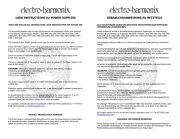
5 Augustus 2025
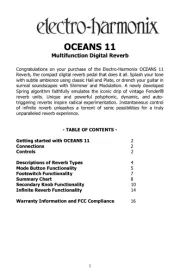
5 Augustus 2025
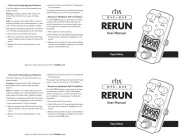
5 Augustus 2025
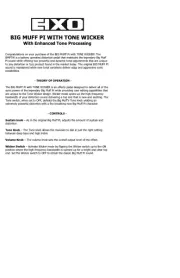
5 Augustus 2025
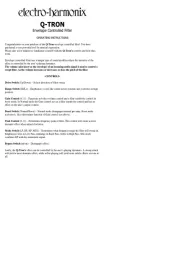
5 Augustus 2025
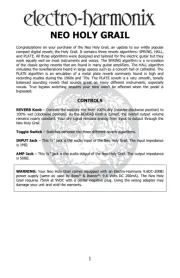
4 Augustus 2025
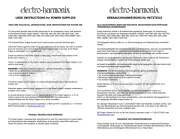
4 Augustus 2025
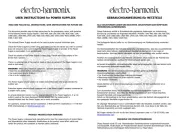
4 Augustus 2025
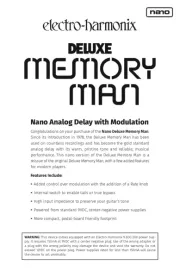
4 Augustus 2025
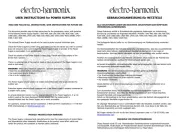
4 Augustus 2025
Handleiding Niet gecategoriseerd
- Cicada Audio
- Revamp
- Kurgo
- TSC
- Broil King
- Kenwood
- Apantac
- Orei
- Brändi
- Aprilia
- Pitsos
- King Canopy
- Edsyn
- Goal Zero
- Lindy
Nieuwste handleidingen voor Niet gecategoriseerd

14 September 2025

14 September 2025

13 September 2025

13 September 2025

13 September 2025

13 September 2025

13 September 2025

13 September 2025

13 September 2025

13 September 2025